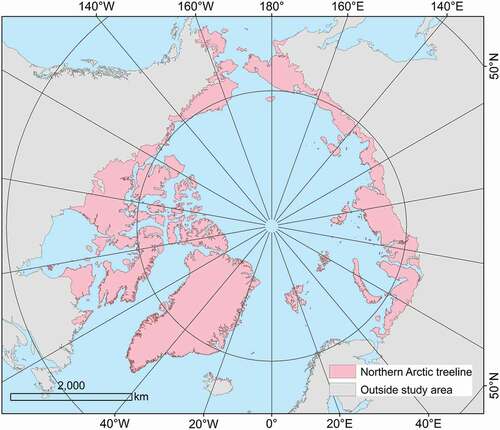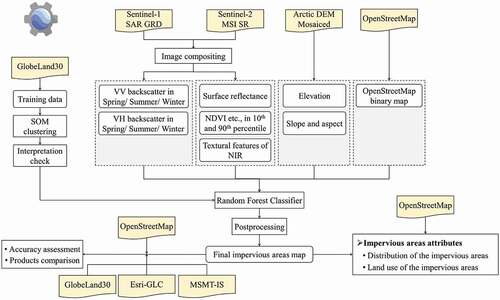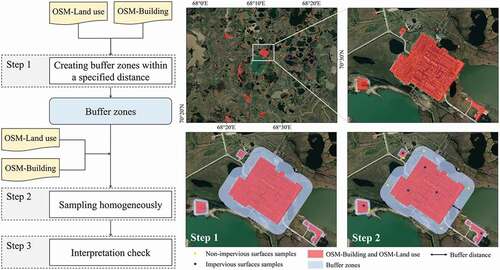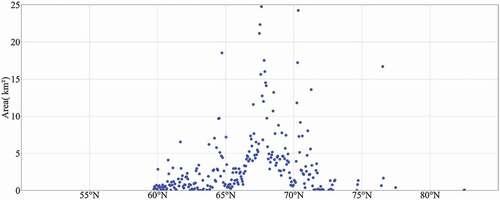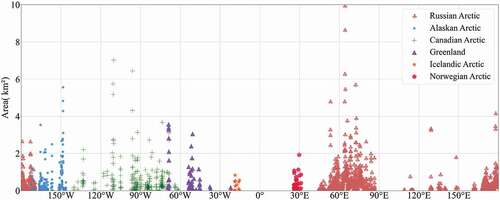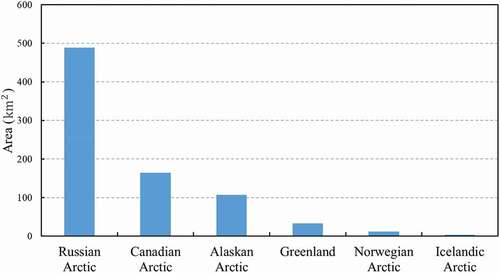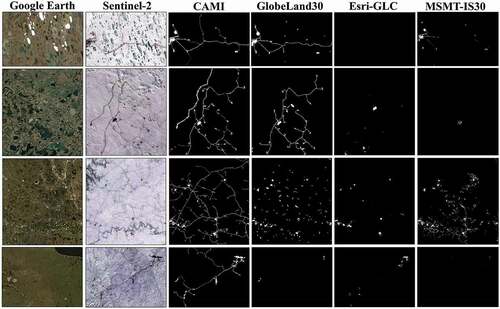Figures & data
Table 1. All of 33 features used in the RF model.
Figure 4. Distribution of impervious areas in the northern Arctic treeline. Every point in the map refers to the location of the centroid of the impervious areas and its color refers to the area. The highlighted sites in the map are located in Alaska, Canada, Russia and Greenland.
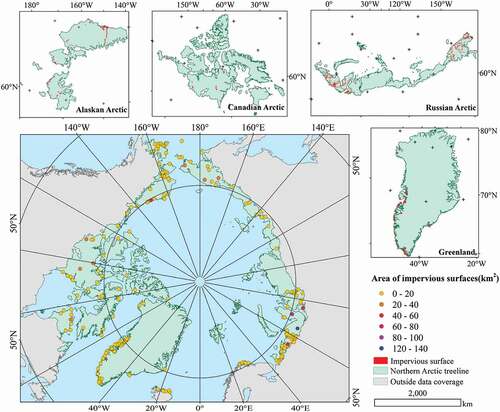
Table 2. Accuracy of the four impervious areas maps using validation samples.
Figure 8. Comparison between the method result (the third column) and the three other impervious products (the 4th to 6th columns corresponded to the GlobeLand30, Esri-GLC and MSMT_IS) for six plots. The second column is the corresponding RGB-composite Sentinel-2 images in 2020.
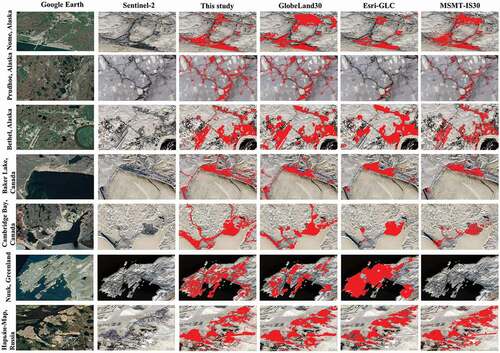
Figure 9. Area proportion of impervious land-use in Russia, Norway, Iceland, Greenland, Canada and Alaska. The impervious areas for industrial use contains industrial and mining land, for public use contains parks, cemetery and parking lots, for transport use contains airport and apron. Unclassified class refers to the impervious areas with unknown land-use identification in OSM dataset.
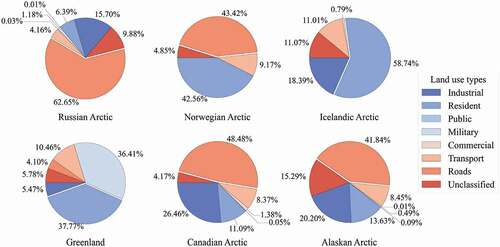
Figure 10. Stacked bar of 8 impervious land-use class in Arctic and its fraction of every country (region).
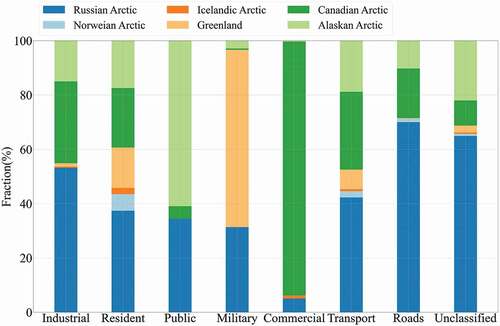
Figure 11. The importance of the input features derived from the random forest model using the training samples in six regions. Mean decrease in accuracy was used to assess the importance of the input features, which refers how much the model accuracy decreases if that variable was dropped. The bar with different colors refers the mean importance of the different data sources.
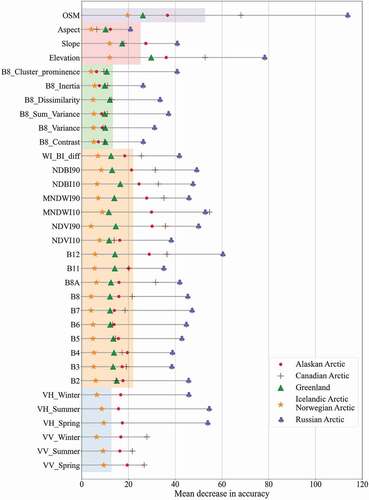
Figure 12. Example of classification results of human-impacted areas in comparison to OpenStreetMap and the Google Earth online hybrid map in Yamal, Russia: (a) OpenStreetMap (blue-waterbodies, grey-roads); (b) classification results based on this study; (c) Google Earth online hybrid map; (d) Sentinel-2 red-green-blue (band 4-3-2) composition in 2020. Projection WGS_1984_EPSG_Russia_Polar_Stereographic.
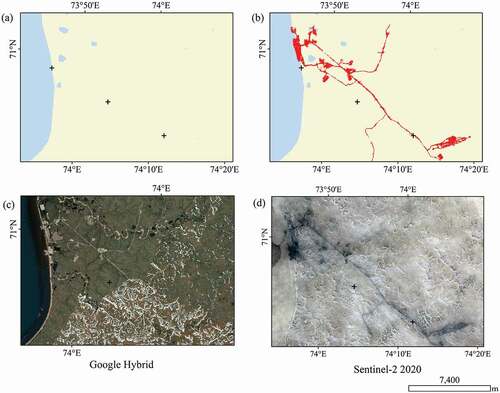
Figure 13. Examples of human-impacted areas in comparison to SAR images, Google Earth and classification result with SAR derived features only in Arctic: the first column refers the Sentinel-1 spring-summer-winter composition in 2020, the second column refers Google Earth online hybrid map and the third column refers the classification result based on the SAR derived features. The highlighted boxes in yellow indicate the true impervious areas and cyan boxes indicate the bare lands.
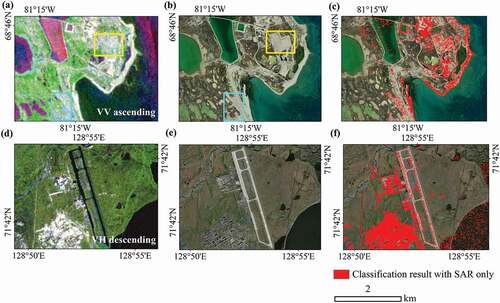
Data availability statement
The CAMI map will be openly accessed at http://www.doi.org/10.11922/sciencedb.01435

